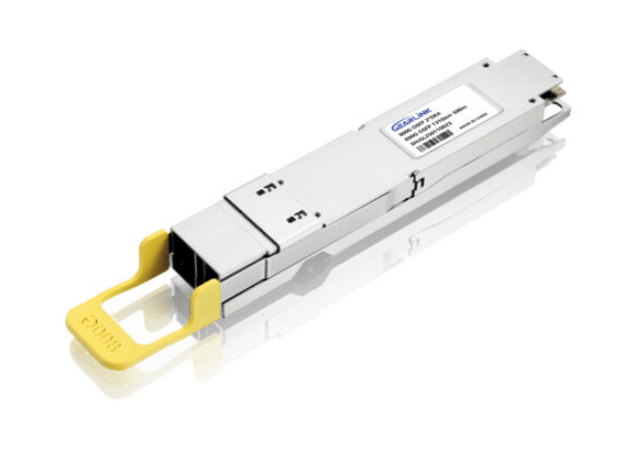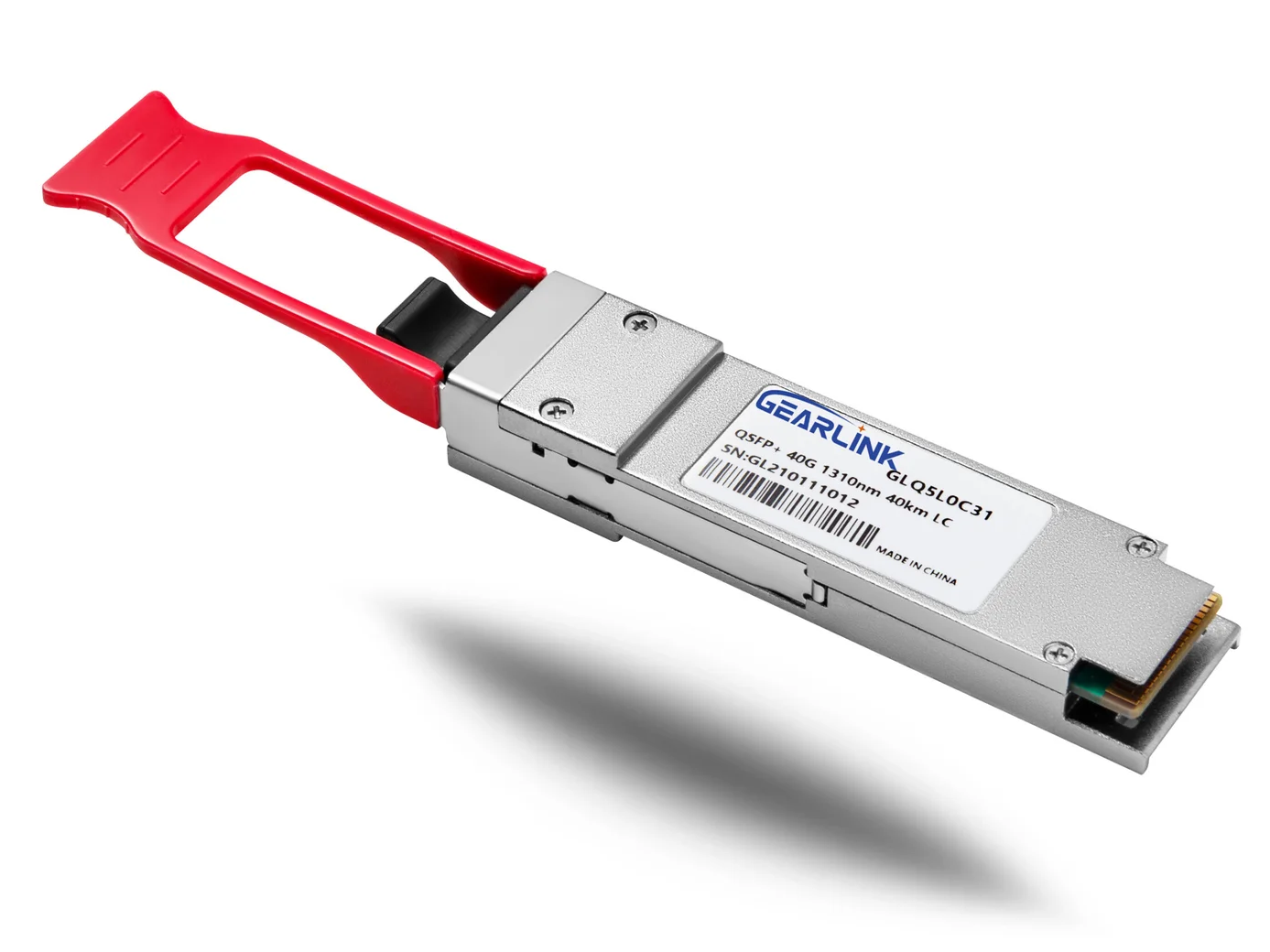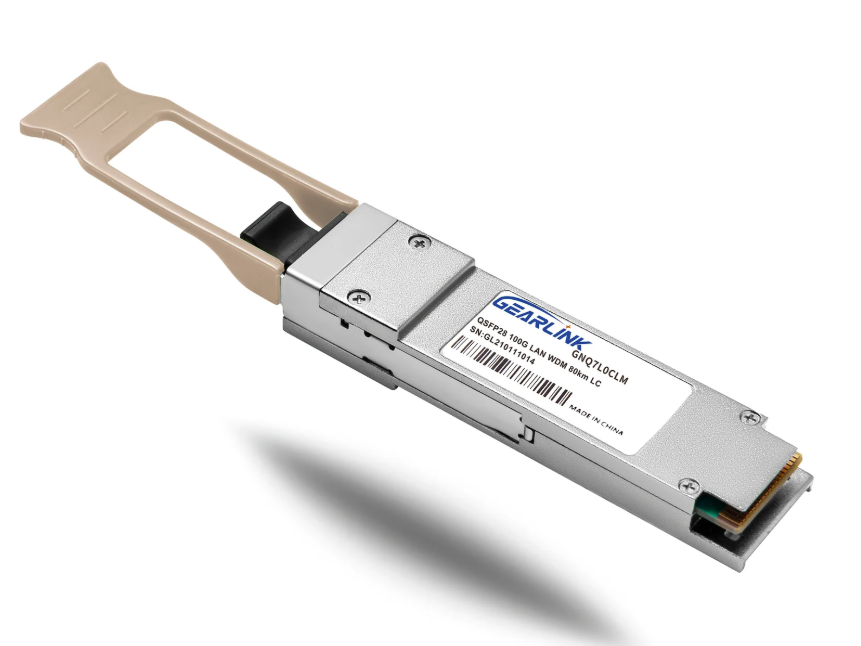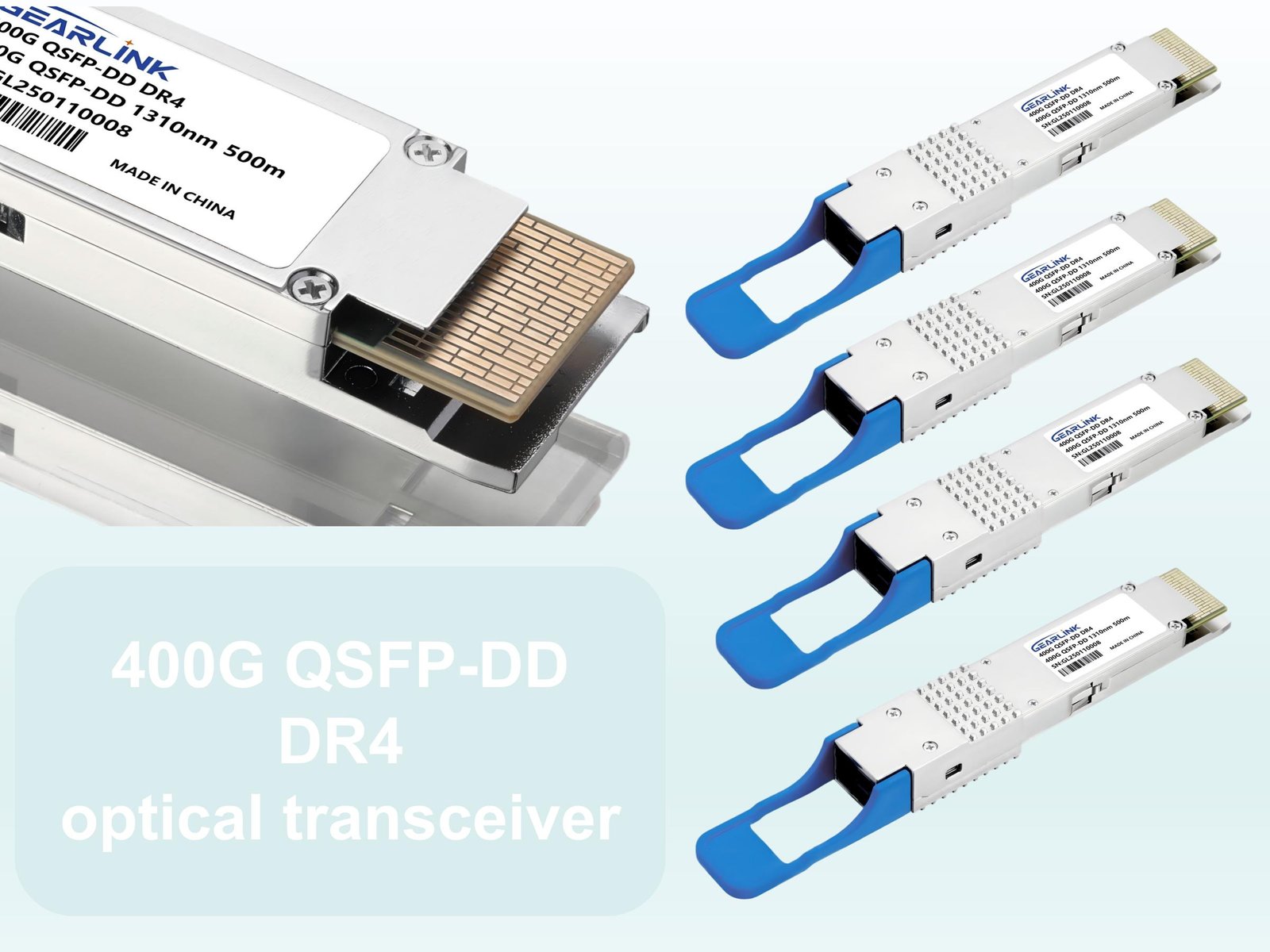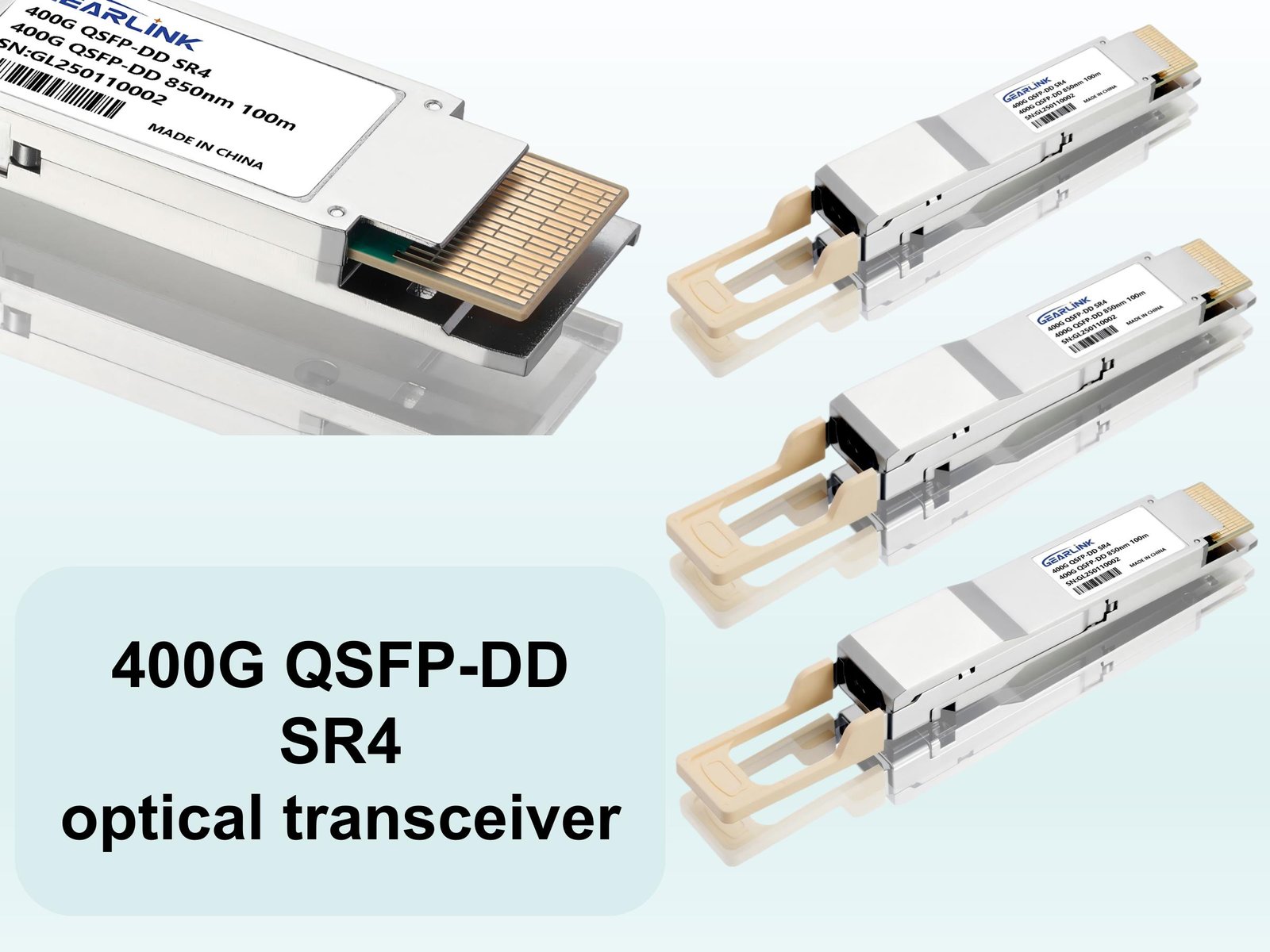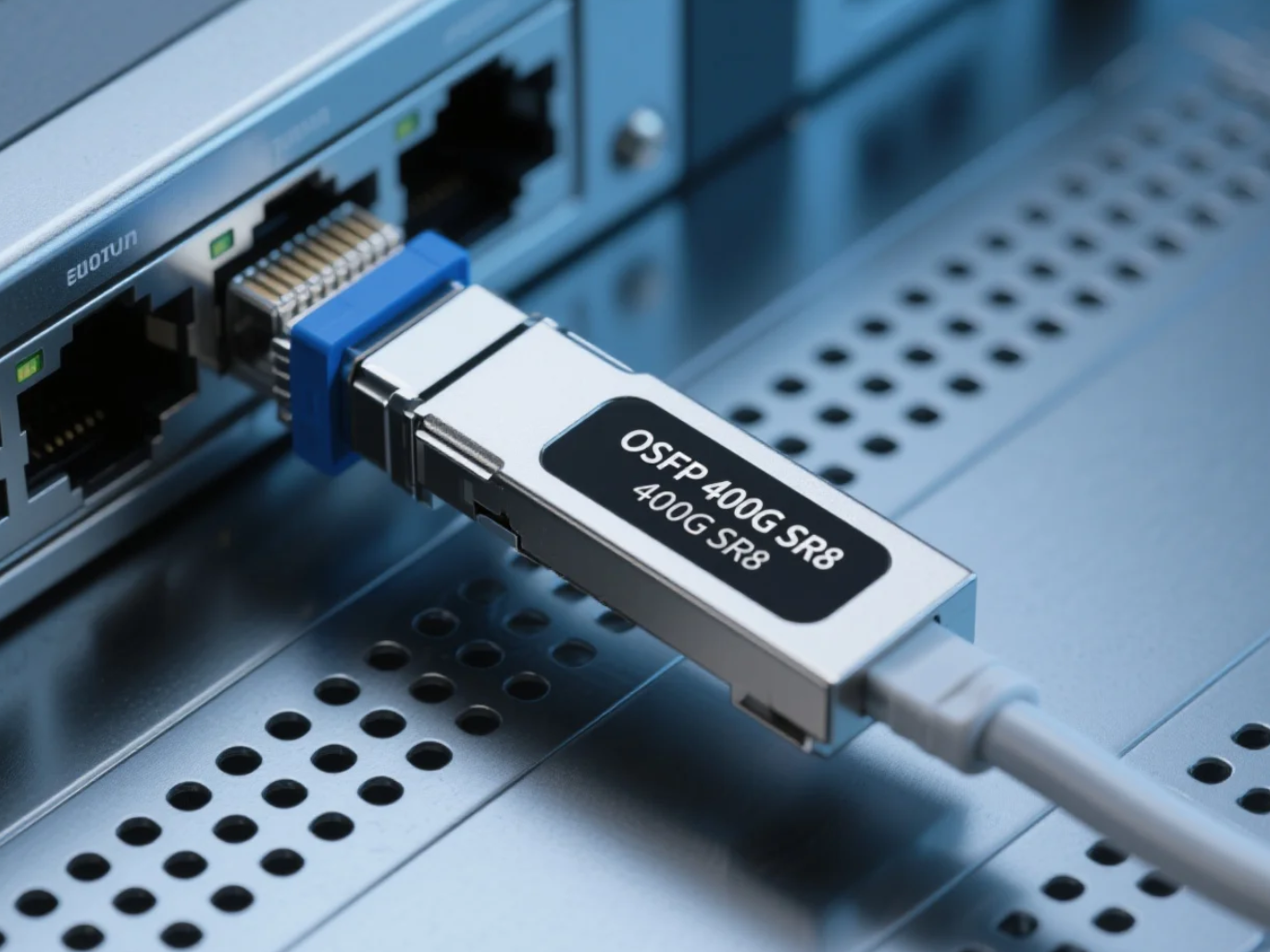The digital era has brought with it an unprecedented surge in data creation, fueled by the widespread adoption of cloud computing, streaming services, and the explosive growth of artificial intelligence (AI) and machine learning (ML). This relentless demand for bandwidth has pushed the boundaries of traditional network infrastructure, creating bottlenecks that hinder performance and scalability. At the core of this challenge lies the need for optical transceivers capable of handling multi-terabit data flows with unparalleled efficiency. The 800G OSFP transceiver is a pivotal technology designed to meet this demand head-on, offering a definitive solution for modern high-speed data transmission.
An 800G optical transceiver doubles the capacity of its 400G predecessor, representing a critical leap in network evolution. The 800G OSFP variant distinguishes itself with a design purpose-built for high data rates. Its name, “Octal,” directly references its architecture, which consists of eight electrical lanes. Each of these lanes operates at an impressive 100 gigabits per second (Gbps), culminating in a total module throughput of a steep 800 Gbps. This architecture provides a high-performance solution that also focuses on minimizing energy consumption and maximizing space utilization. The OSFP‘s compact size allows for high-density port configurations, a crucial advantage in the space-constrained environments of modern data centers. Furthermore, its hot-pluggable design ensures ease of deployment and maintenance.
The design philosophy behind the OSFP form factor provides a telling perspective on its role in the industry. The “Octal” designation suggests a form factor engineered from the ground up to support eight high-speed electrical lanes, with an eye toward future speeds beyond 800G. This forward-looking approach contrasts with the evolution of the QSFP-DD (Quad Small Form-factor Pluggable Double Density) form factor, which achieved 800G by extending an existing, proven ecosystem. While both form factors ultimately employ eight lanes to reach 800G, the OSFP‘s architecture was strategically developed to accommodate the higher power and thermal requirements of next-generation transceivers. This fundamental difference in design philosophy has significant implications for network architects, influencing decisions based on long-term scalability and thermal management capabilities.
The Technological Blueprint: A Deep Dive into 800G OSFP Architecture
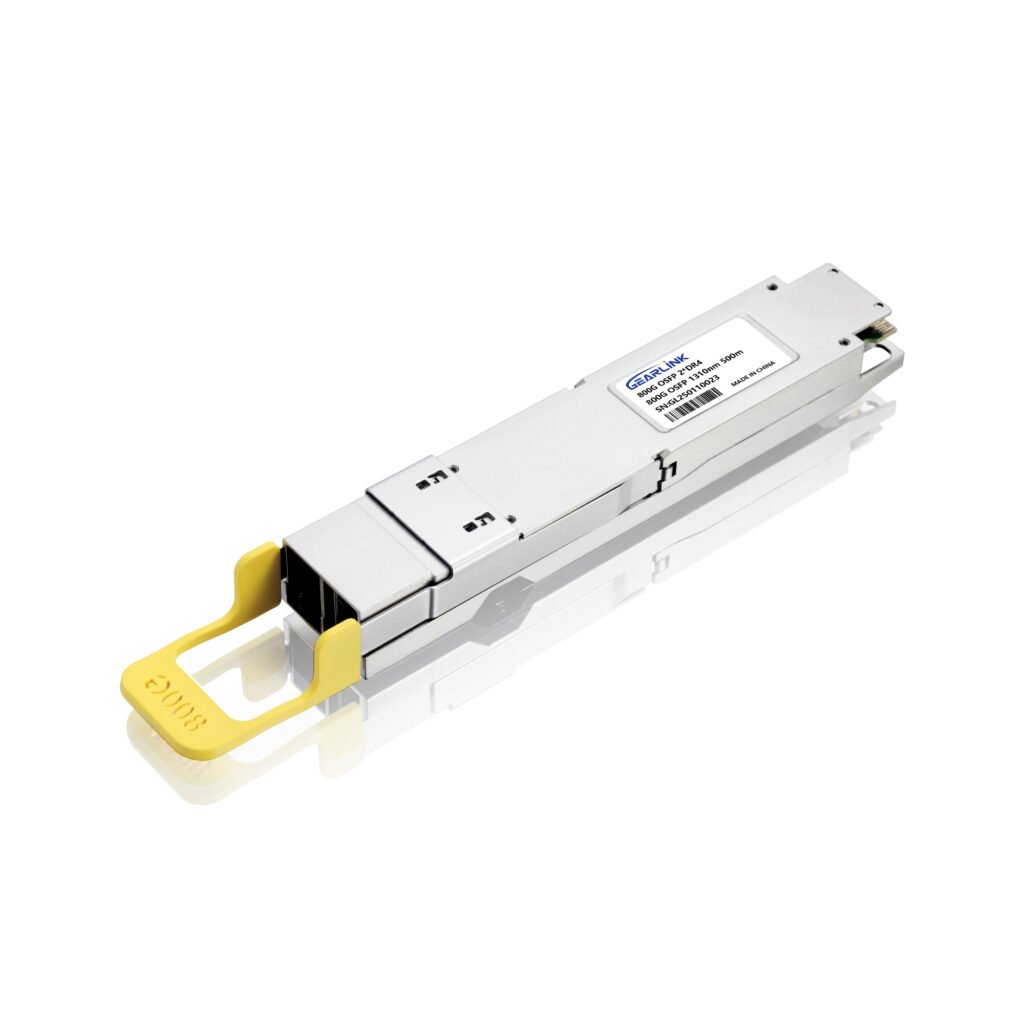
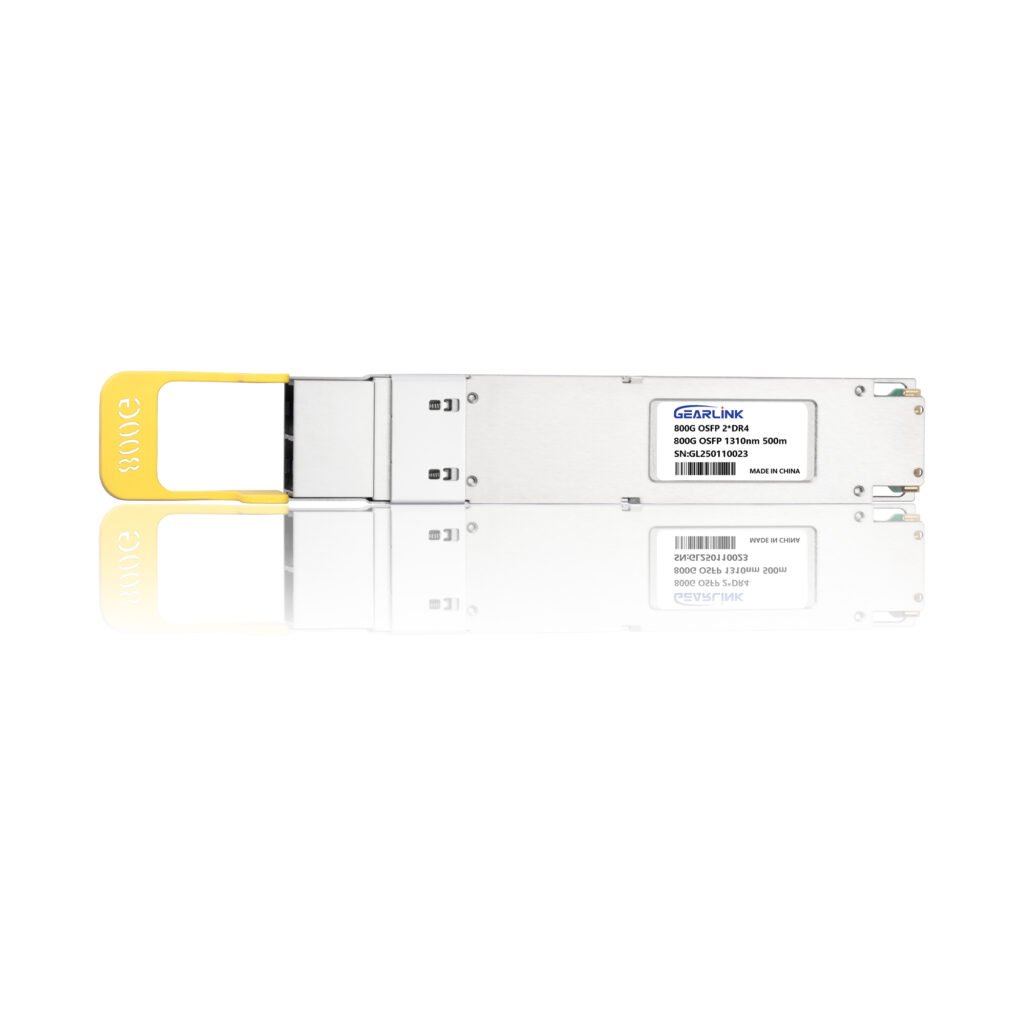
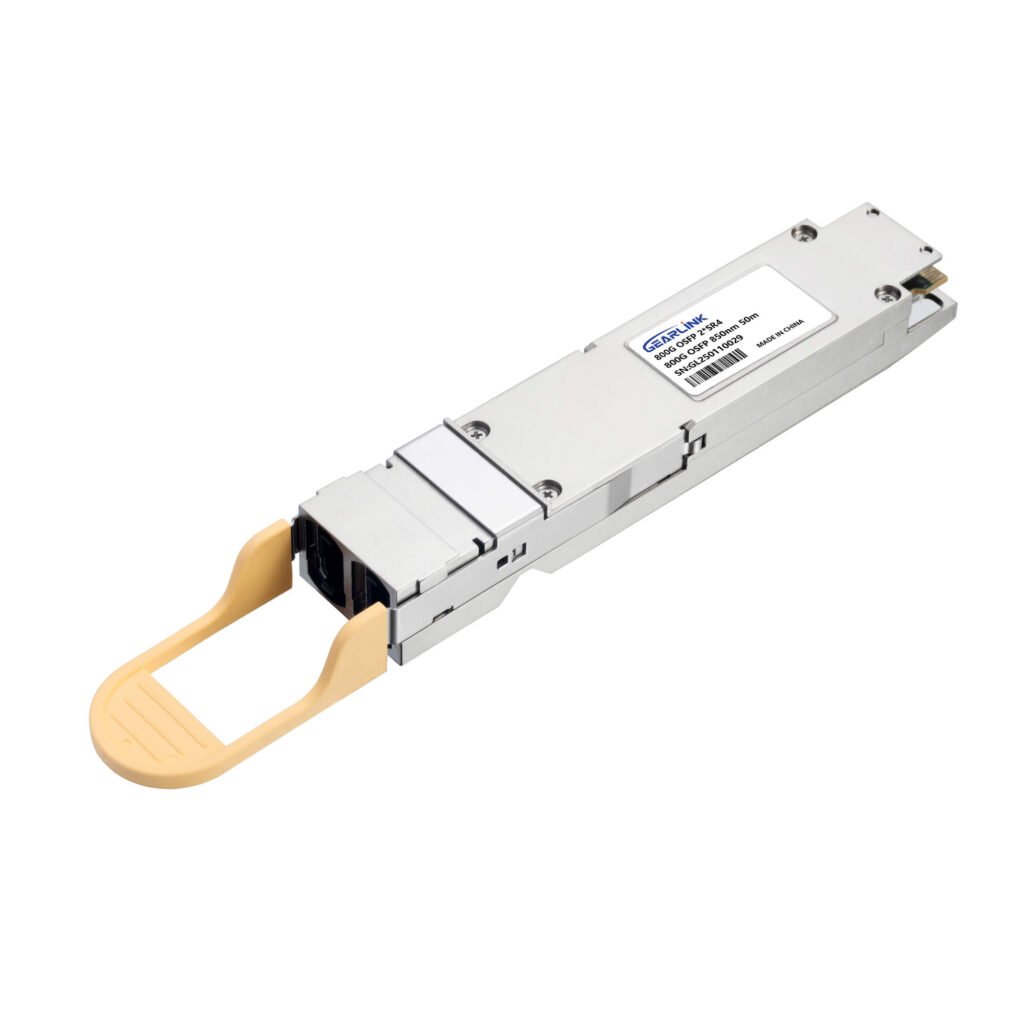
Achieving an 800 Gbps data rate is a complex endeavor that goes far beyond a simple increase in bandwidth. It requires a suite of advanced technologies to ensure reliable, high-speed data transmission over a physical medium. The 800G OSFP transceiver is a testament to this, integrating sophisticated modulation, signal processing, and error correction techniques.
The primary enabling technology is Pulse Amplitude Modulation 4-Level (PAM4). Unlike traditional Non-Return to Zero (NRZ) modulation, which encodes a single bit per symbol, PAM4 uses four amplitude levels to encode two bits per symbol. This effectively doubles the amount of data that can be transmitted over a single channel at the same baud rate. For 800G modules, this allows each of the eight electrical lanes to carry 100 Gbps of data with a modulation of 53 Gbaud, making the 800G throughput possible.
While PAM4 significantly boosts data density, it also introduces challenges. The smaller amplitude differences between the four levels make the signal more susceptible to noise, signal distortions, and other non-linear effects, resulting in an increased Bit Error Rate (BER). To combat these inherent vulnerabilities, the 800G OSFP relies on two critical technologies: Digital Signal Processing (DSP) and Forward Error Correction (FEC).
A PAM4 DSP is an essential component that manages various signal processing tasks, including equalization and re-timing incoming data to reduce jitter and improve overall signal quality. This active processing ensures the integrity of the high-speed data stream. Furthermore, the 800G OSFP utilizes FEC, a method of error control that adds redundant data to the original stream. This redundancy allows the receiver to detect and correct errors without requiring a retransmission, a vital capability for maintaining the ultra-low latency demanded by modern data center applications. The complexity of the transceiver has fundamentally shifted from a passive signal converter to an active processor, with DSP and FEC becoming non-negotiable components for reliable performance.
The internal architecture of the 800G OSFP is a marvel of miniaturization and integration. The transmitter path features a series of drivers that amplify the electrical signal before it is sent to the modulators. For long-reach single-mode applications, the module typically employs Electro-absorption Modulated Lasers (EMLs), which are favored for their ability to maintain constant laser properties during modulation, enabling higher speeds over longer distances with minimal chromatic dispersion. Conversely, short-reach multimode modules utilize Vertical-Cavity Surface-Emitting Lasers (VCSELs). On the receiver path, the optical signal is converted back into an electrical current by photo-detectors and then amplified into a usable voltage level by Transimpedance Amplifiers (TIAs).
OSFP vs. QSFP-DD: A Strategic Comparison for Data Center Deployment
For network architects, the choice between the 800G OSFP and QSFP-DD form factors is a critical strategic decision that involves more than just a preference for one standard over another. It represents a trade-off between competing priorities: maximizing future performance versus leveraging existing infrastructure and achieving cost efficiency.
The two form factors are physically distinct and not interchangeable, with the OSFP being a larger module than the QSFP-DD. This size difference is not arbitrary; it directly impacts key operational characteristics. The OSFP’s larger dimensions allow for a superior thermal management design with an integrated heatsink. This enables it to handle higher power consumption, with modules capable of drawing up to 15 watts or more, and allows them to operate at a lower temperature, often running between 5∘C to 15∘C cooler than equivalent QSFP-DD modules. The QSFP-DD, constrained by its smaller form factor, typically has a lower power budget (around 12 watts), making it a more energy-efficient option for certain deployments.
The main strategic divergence lies in backward compatibility. The QSFP-DD was designed to be perfectly backward compatible with its predecessors (QSFP+, QSFP28, QSFP56), providing a seamless and cost-effective upgrade path for organizations with extensive existing QSFP-based infrastructure. This allows network teams to scale bandwidth without undergoing a complete hardware overhaul. In contrast, the OSFP is not natively backward compatible with older QSFP formats, though a passive mechanical adapter can be used to insert a QSFP module into an OSFP port.
Ultimately, the choice hinges on the user’s specific architectural goals. The OSFP‘s superior thermal capacity and larger form factor make it an ideal choice for high-power, high-density computing environments like AI and high-performance computing (HPC) clusters, where performance and reliability are paramount. Its design is a strategic advantage for accommodating future technologies, such as 1.6T, without requiring a fundamental redesign of the form factor. For those with established QSFP-DD ecosystems, the seamless backward compatibility of the QSFP-DD provides a more gradual and cost-effective transition.
| Feature | 800G OSFP | 800G QSFP-DD |
| Form Factor | Octal Small Form-factor Pluggable (OSFP) | Quad Small Form-factor Pluggable Double Density (QSFP-DD) |
| Dimensions | 107.8mm×22.58mm×13.0mm | 103mm×18.35mm×8.5mm |
| Electrical Lanes | 8 lanes | 8 lanes |
| Max Power Consumption | Up to 15W+ | Up to 12W |
| Thermal Management | Superior, with integrated heatsink; runs cooler | Good, but smaller size limits thermal capacity |
| Backward Compatibility | Not natively compatible, requires adapter | Excellent compatibility with older QSFP formats |
| Primary Advantage | Higher power handling and future-proof design | Seamless backward compatibility and energy efficiency |
Navigating the 800G OSFP Portfolio: Key Variants and Their Applications
The 800G OSFP ecosystem is not a single, monolithic product. It offers a diverse portfolio of module variants, each tailored for a specific transmission distance and fiber type. Network professionals must understand the key naming conventions (e.g., SR, DR, FR, LR) to select the correct module for their application. These acronyms denote the module’s reach, while the numbers often indicate the number of lanes or wavelengths used.
- 800G OSFP SR8: The SR8 (Short Reach) module is designed for multimode fiber and uses 8 parallel lanes. It leverages VCSEL lasers at an 850nm wavelength and is ideal for ultra-short interconnects within a single rack or between servers and switches, with a maximum transmission distance of up to 100 meters. This variant is a cornerstone for building high-bandwidth AI and HPC clusters.
- 800G OSFP DR8: The DR8 (Datacenter Reach) module supports single-mode fiber (SMF) for connections up to 500 meters. Like the SR8, it utilizes 8 parallel lanes, employing DML or EML lasers operating at a 1310nm wavelength. This variant is a perfect fit for intra-data center connections, such as connecting racks within a large facility.
A particularly valuable feature of the 800G OSFP ecosystem is its support for multiple transmission rates and breakout modes. This provides network professionals with significant flexibility. A single 800G port on a switch can be logically partitioned to function as two separate 400G ports or eight separate 100G ports using breakout cables. This capability is instrumental for network upgrades, allowing data centers to deploy 800G-capable switches and connect them to a mix of existing 400G and 100G equipment. This strategic approach protects prior investments and enables a phased transition to higher speeds, making the 800G OSFP a truly future-proof solution.
| Variant | Primary Use Case | Transmission Distance | Fiber Type | Connector |
| OSFP-800G-SR8 | Intra-data center (server-to-switch) | Up to 100m | Multimode (OM4) | MPO-16 or Dual MPO-12 |
| OSFP-800G-DR8 | Intra-data center (rack-to-rack) | Up to 500m | Single-mode | MPO-16 |
Solving Modern Network Bottlenecks: The Impact on AI and Cloud Infrastructure
The rise of AI and cloud computing is the most significant driver of the demand for 800G connectivity. These technologies are not only increasing the volume of data but also changing how it moves across the network. Traditional network architectures, which were designed for more predictable North-South traffic (client-to-server), are proving inadequate for the massive East-West traffic that characterizes large-scale AI model training and inter-server communication. The limitations of conventional data center bandwidth have become a significant bottleneck for GPU clusters, where internal traffic accounts for over 80% of network usage.
The 800G OSFP is a fundamental enabler of the modern Spine-Leaf network architecture, a flattened two-tier model that replaces the traditional three-tier structure. This new architecture demands high-bandwidth, low-latency links between every leaf and spine switch to ensure efficient server-to-server data transmission. The 800G OSFP provides the necessary throughput and high port density to make this scalable and predictable architecture feasible within a small physical footprint, such as a 1U switch.
Furthermore, the 800G OSFP directly addresses the critical need for ultra-low latency in AI workloads, where protocols like RDMA over Converged Ethernet (RoCEv2) are essential for bypassing the CPU and enabling direct memory access between computing nodes. The high signal integrity and low-latency performance of 800G links are crucial for ensuring that these protocols function optimally, preventing the data transfer challenges that can slow down or stall AI model training. The seamless integration of 800G hardware with a RoCEv2-optimized network allows for zero packet loss and microsecond-level responsiveness, which is indispensable for GPU-intensive tasks.
Beyond bandwidth and latency, the 800G OSFP‘s design provides a direct countermeasure to the energy and thermal challenges of AI infrastructure. The intense computational power required for AI generates significant heat, with some high-density server cabinets exceeding 30 kilowatts of power density. The OSFP‘s superior thermal management capabilities—a direct result of its larger form factor and integrated heatsink—allow it to operate at lower temperatures, which not only improves reliability but also contributes to the overall energy efficiency of the data center. The OSFP is not merely a component; it is an active enabler of the foundational architectural shifts required to sustain the growth of AI and cloud computing.
Future-Proofing Your Network: The Market and Technology Roadmap
The market for 800G transceivers is in a phase of explosive growth, signaling a critical technology inflection point for the optical networking industry. Valued at approximately USD 1.5 billion in 2024, the market is projected to reach around USD 8.2 billion by 2033, reflecting a robust Compound Annual Growth Rate (CAGR) of 18.5% from 2025 to 2033. This rapid expansion is a direct consequence of the accelerating deployment of AI, 5G infrastructure, and hyperscale data centers, which are driving unprecedented demand for high-speed, low-latency connectivity.
North America currently leads the market, largely due to the high concentration of hyperscale cloud service providers like Google and Microsoft that are at the forefront of deploying 800G to scale their data center capacity. Meanwhile, Asia-Pacific is emerging as the fastest-growing market, fueled by significant government investments in 5G and AI infrastructure. The rapid pace of this growth suggests that 800G is transitioning from a niche solution to a mainstream, must-have technology for any organization looking to stay competitive in the digital economy.
The roadmap for high-speed optical transceivers is already moving toward the next generation. The OSFP‘s larger form factor, with its superior power and thermal handling, was strategically designed to accommodate these future upgrades, providing a viable path forward without requiring a complete redesign of network equipment. Beyond traditional pluggable transceivers, the long-term architectural shift points toward co-packaged optics (CPO), where optical components are integrated directly with switching ASICs. While still in its early stages, CPO is viewed as the future for ultra-high-density, high-throughput environments and will likely gain traction in hyperscale deployments after 2025.
Practical Insights and Troubleshooting for Network Users
Due to the inherent complexity and sensitivity of high-speed optical links, proper testing and validation are non-negotiable for reliable deployment. Tools like the 800G OSFP loopback module have become indispensable for this purpose. A loopback module is a hardware tool that loops a transmitted signal from a port directly back to its receiving port, effectively simulating data transmission without the need for external fiber connections or transceivers.
These modules serve a multitude of core functions. They can perform port self-tests, conduct Bit Error Rate (BER) testing, analyze signal integrity by measuring key indicators like PAM4 eye diagrams and jitter, and verify compatibility with host devices. Loopback modules come in two main types: passive, which are used for basic electrical signal quality tests, and active, which are capable of more complex signal analysis, making them suitable for high-speed precision testing. The value proposition of these tools is significant: they reduce the need for costly transceivers during testing, streamline factory quality control, and empower network operations and maintenance (O&M) personnel to quickly pinpoint faults and minimize downtime. The necessity of such specialized tools highlights the shift in high-speed networking from simple connectivity to sophisticated, performance-sensitive system management.
For reliable deployment, it is also crucial to verify that the 800G OSFP module is compliant with key industry standards, including the OSFP MSA, IEEE 802.3, and OIF-CMIS. Adherence to these standards guarantees interoperability and ensures the module will function as expected within the network ecosystem. A word of caution: the use of third-party optical modules, particularly those with high power consumption, can potentially cause thermal damage to host equipment and may not be supported by OEM vendors, a risk that falls on the user.
Frequently Asked Questions (FAQ)
What are the main benefits of moving to 800G OSFP?
The primary benefits are increased capacity, higher port density, and a future-proof, scalable solution. One 800G port provides double the capacity of a 400G port, allowing for faster data transmission and easier aggregation of lower-speed links.
Can I use an OSFP module in a QSFP-DD port?
No. The OSFP and QSFP-DD are two physically distinct form factors and are not interchangeable. A device designed for OSFP ports must use OSFP modules, and a device designed for QSFP-DD ports must use QSFP-DD modules.
What are the different speeds supported by an 800G OSFP?
An 800G OSFP can be configured in multiple ways depending on the link and cable type. It can support a single 800G port, two 400G ports, or eight 100G ports through the use of breakout cables and specific module types.
How does 800G OSFP address challenges of heat and power consumption?
The OSFP form factor’s larger size allows for an integrated heatsink and superior thermal management. This enables the module to handle a higher power budget while operating at a lower temperature compared to other form factors, a critical advantage in high-density data center deployments.
What standards should I look for in an 800G OSFP module?
A reliable 800G OSFP module should be compliant with the OSFP MSA, IEEE 802.3, and OIF-CMIS specifications. Compliance with these standards ensures interoperability and reliable performance within a multi-vendor network environment.
Conclusion
The 800G OSFP optical transceiver is a cornerstone technology for modern data infrastructure, representing a critical solution to the escalating bandwidth and latency demands driven by AI, cloud computing, and high-performance computing. Its unique design, which combines a ground-up architecture with a sophisticated suite of enabling technologies like PAM4 modulation, DSP, and FEC, allows it to deliver phenomenal performance and scalability. While its primary competitor, the QSFP-DD, offers compelling advantages in backward compatibility, the OSFP’s strategic focus on superior thermal management and a future-ready form factor positions it as an ideal choice for the most demanding workloads.
By enabling the transition to high-density Spine-Leaf architectures and supporting ultra-low-latency protocols like RoCEv2, the 800G OSFP is not merely an incremental speed increase; it is a foundational component that powers the architectural shifts of the AI era. As the market for high-speed optics continues its rapid expansion, understanding the technical nuances and strategic implications of the 800G OSFP will be crucial for any professional tasked with building and maintaining a resilient, high-performance network.
